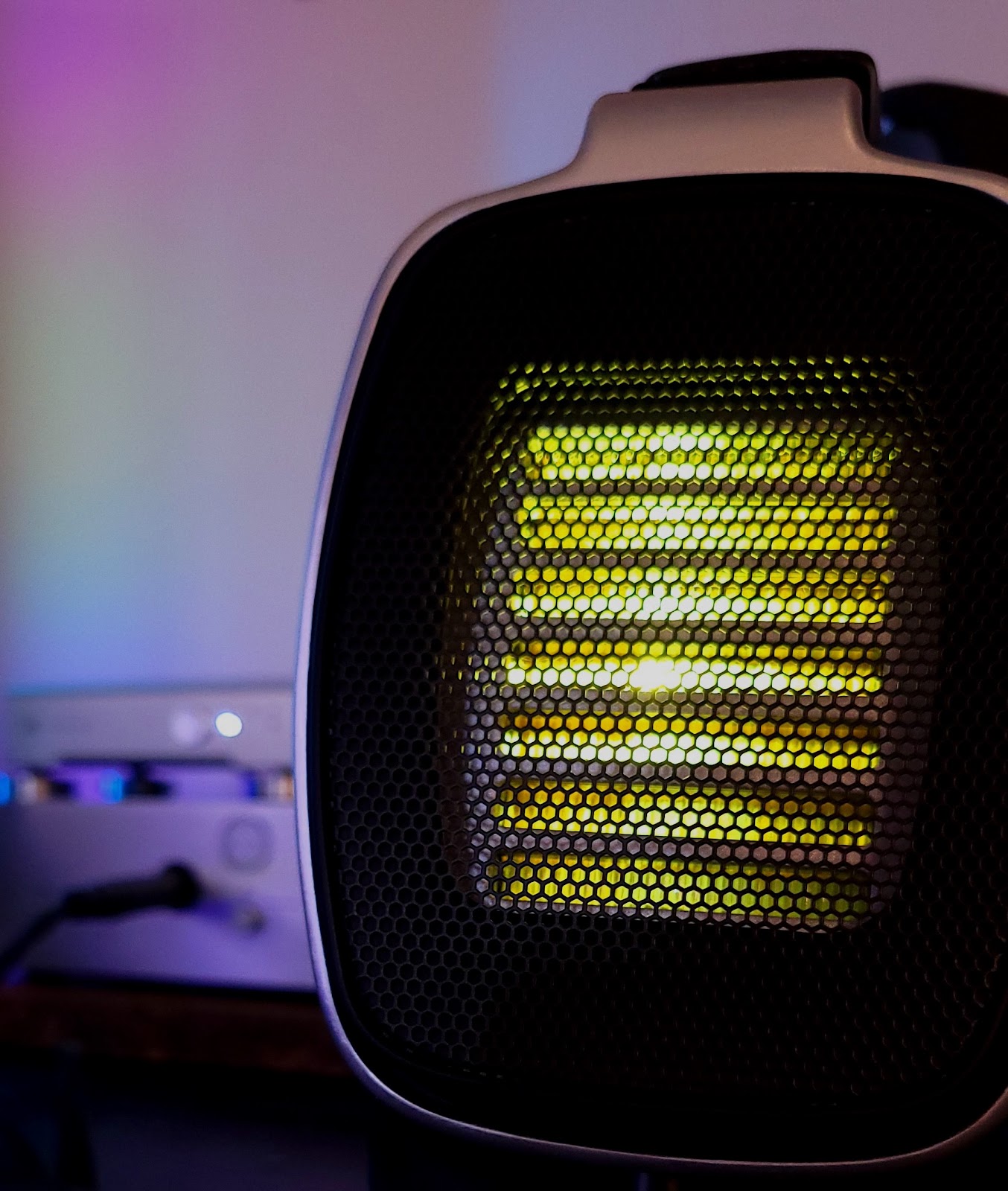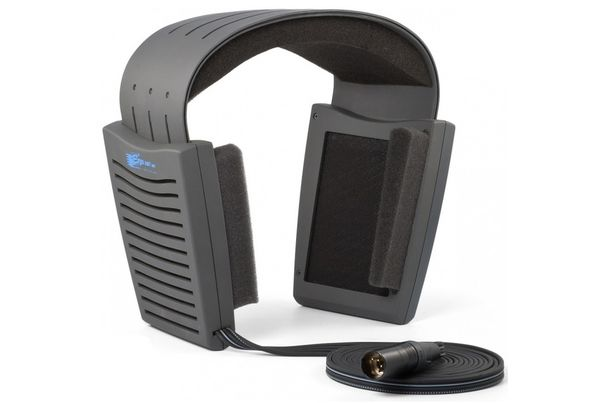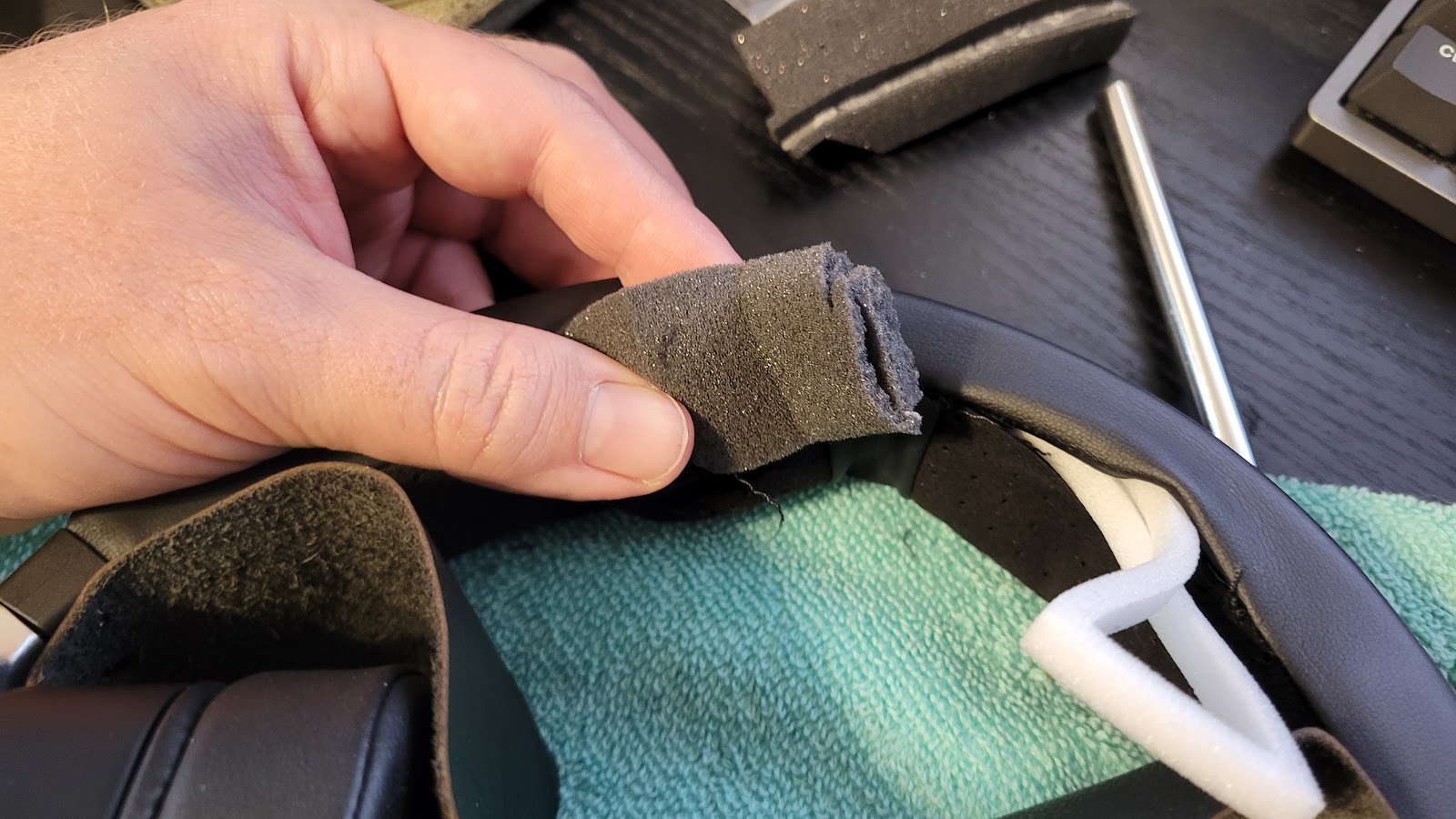I love headphones. I love technology. So it stands to reason I like headphone technology. In fact I've written about it here on a couple occasions. So when a "new" innovation in the field springs up, I tend to take notice. It was just such an innovation that motivated me to peck out those original writings some thirteen years ago.
Back then I was quite bullish on the concept of planar magnetic technology. Here was something that promised to deliver much of the speed and resolution of electrostatic drivers, but with the ability to be plugged into any conventional headphone amp. And they were being made by a couple guys futzing around in a garage, producing headphones that rivaled the best multi-million dollar technology from the market's biggest players. It was almost like getting to witness Jobs and Wozniak stamping the first fruit logo on a home computer. And yeah, to me and many others, the writing was on the wall.
I'm less bullish on AMT technology, though. AMT, or Air Motion Transformer transducers, are closer in DNA to planars than dynamics or anything else. Essentially it's like an accordion. You have a folded diaphragm that squeezes and expands to move air. OK it's not really an accordion — an accordion is basically a bellows that squeezes air through reeds. AMT produces sounds through the folds themselves via extremely fast movement. One manufacturer reckons four times faster movement than planars or dynamics. (We'll get to them in a bit.) And like those technologies, you can plug it into an ordinary headphone amp.
Sounds promising so far, right?
To be fair, AMT technology isn't technically "new". Neither was planar technology in 2009, but the magic is when it grew from an obscure, underground alternative to something that has since changed the headphone landscape forever.
Nowadays it's almost harder not to find a headphone that uses planars. You can find them at nearly any price point (although maybe not at the Dollar Tree), in any size or shape, from companies in nearly every part of the world. They're found within the worlds highest performing circumaurals, and yet are apparently easy enough to make that any new startup wanting to dip their toe in the personal audiophile ring are most likely to go the planar route. It seems like every month I'm finding out about a new obscure company or intrepid group that has either released one, or has one in development. It's impossible to understate the fact that... They're friggin everywhere.
Sure, dynamic drivers still exist. Sennheiser still uses them, although it's hard to say if their new owners will ever fund a successor to the aging HD 800S. Beyerdynamic still uses them, although they've largely left the consumer business behind. Same with AKG and Sony. Ironically HiFiMAN, the first to thrust their knife in Caesar's back, occasionally dabble in dynamic driver headphones here and there. In the speaker world they're still the de facto, of course, but the only companies really pushing dynamics in headphones, and who are still actively developing and improving on it, are Focal and ZMF.
(Of course it's worth noting, one of ZMF's latest product introductions as of this writing, their new flagship and by far most expensive product, is the Caldera. And it happens to be their first planar-magnetic headphone, and seemingly something of a concession to the idea. Why, after all, did it take a planar to reach such new heights?)
The promise of planars was pretty clear from the beginning, but with AMT, it's a little less crystalline. AMT has existed thus far largely housed inside speakers. They're used as tweeters in a number of studio monitors and a few home sets. Their speed has given them their famed performance in higher frequency reproduction, but in the application of headphones, they'd have to deal with the full audio spectrum. And that leads to one of their most reputed shortcomings: They have no bass.
That perception came about because... well, someone tried it already.
Now what you see above is hardly reminiscent of a modern AMT headphone you'd see today. This was a crude early attempt in the late 90s, which floated the drivers over your ears using narrow strips of foam—hardly circumaural—and they required an external box that hooked into the speaker jacks of your stereo amplifier. Very practical.The open baffle nature of Precide's Ergo A.M.T. leaves little wonder why its lower frequency presence wasn't exactly satisfactory. As one fan on Head-fi put it: "[It] would prove to be utterly and completely bass deficient by design." Of course the driver itself wasn't necessarily the best suited to the task, anyhow. For that, it would take a further evolution of the concept, and one company in particular took it upon themselves to forge the path.
HEDD, or Heinz Electrodynamic Design, a company founded in 2015 in Berlin, Germany, is perhaps the most ideal company to have spearheaded that evolution. It was a company established solely to develop and sell speaker systems that incorporated AMT technology, based on work that Klaus Heinz, father of one of the company's founders, had done decades prior.
They had already built a solid reputation particularly in the recording industry for their studio monitors that incorporated AMT tweeters. Their specialized expertise and experience gave them useful insight into the science of those transducers, and when it came time to tackle the idea of a full-range AMT driver aimed at headphones, you might say they already had a leg-up on everyone else.
Their solution is what they call Variable Velocity Transformation, which in the simplest terms means they created folds of various sizes in the diaphragm to better handle different (particularly lower) frequencies. I'm sort of reminded of the Rinaro driver used in Meze's flagship planar headphones, where different parts of the diaphragm are adapted to handle different frequency ranges more acutely.
HEDD Audio donned their creation the only name it should ever have: HEDDphone. It's simple and genius, though it perhaps makes it difficult to talk about out loud when you don't have the clever spelling to aid you. But more imporantly, the HEDDphone promised to deliver the true potential of a full-range AMT driver, that is, a lush and timbrally-accurate midrange, and deep, assertive bass. And all with the great speed that AMT is known for.
So in 2021, I sold some valuables and bought one. Reviews were very positive, claiming it had delivered on its promise, and was well suited to wide range of genres. The only caveats were that not everyone will find it comfortable, and you need a very good amplifier.
I had a pretty good amplifier, a discontinued Meier Corda Classic which was capable of around 2 watts in a 42ohm load such as the HEDDphone. I was perhaps more worried about comfort, but that remained to be seen/felt. They're very heavy for a modern headphone, at 730g (1.6 lbs), and all that weight was resting on the top of your head with a narrow headband, although some said it was well padded enough.
In the end my experience with it was somewhat mixed. Yes the sound was pretty amazing at most things. Not what I would consider suited to all genres, but the genres it did well, it did incredibly well. Specifically jazz. They were the KING of jazz music. But while the bass was very warm and full, and had a little punch, it didn't have much slam, perse. It wouldn't be my go-to headphone for EDM or tracks dependent on a hard-hitting bottom end.
AMT offers some things that no other driver really does. A sort of holographic portal into the recording, where your sense of the room acoustics, the size of the recording venue, and the space within it that each instrument occupies, is something almost tangible. But treble? Treble is unequaled by any other transducer type I've tried. It is the cleanest, smoothest, and yet most detailed and extended treble I ever heard. It's definitely their party trick. AMT started life as a tweeter, and by golly the HEDDphone helps you understand why. That strength isn't lost here.
But comfort was horrendous. I have a huge noggin, and with the driver cups extended to the width required to fit my stately cranium, the headband stretches out to be almost flat. So within 20 minutes or so, I'd have intolerable pain and discomfort on top of my head. And despite owning the second revision that allowed the cups to lower slightly more than the launch version, they still barely fit over my ears. Any additional padding would raise the cups more and make the fit even poorer.
So for the hefty $1900 that they cost, I decided those issues were enough to warrant trying something else. HiFiMAN's Arya Stealth Edition was "only" $1600, and I immediately found it to be MUCH more to my liking. It fit perfectly, and could be worn forever, but it also did every genre of music beautifully, and while maybe not quite matching the strengths of the HEDDphone, it got close enough that its versatility made up for it.
So taking advantage of Headphones.com's amazing return policy, the HEDDphones went back. I was a little sad to see them go, as they were my first truly highend headphone, and I loved their technology (and I listen to a crapload of jazz). But in the end I knew my decision was sound, no pun intended.
Of course, HEDD Audio isn't the only company in modern times to attempt a full-range AMT headphone. Monoprice has the Monolith AMT headphone, and GoldPlanar has the GL850. I'm not really sure where their AMT technology comes from, although both headphones allegedly use the same drivers (just look at their identical impedance and sensitivity), but even though they released after it, in both cases their sound isn't as universally well received as the HEDDphone. Criticisms range from an uneven frequency response to poor technicalities.
But at least their shape can accommodate more human skulls. If only the HEDDphone could be adapted to be as comfortable as other headphones? Foreshadowing...
Well a couple years later, I found myself wanting to try the HEDDphone again. I had upgraded literally everything in my chain, and knowing they were capable of more, I wanted to hear what they could do when fully unleashed. New ones had dropped in price considerably at most only retailers, and gently used ones could be found for even cheaper. For almost half the price I paid originally, I became an owner of a pair of HEDDphones again.
And I'm REALLY glad I gave them another shot. My improved chain (sporting a Bifrost 2, a Lyr+ with Linlai E-6SN7 balloon tube, upgraded discrete OPAMPs in my Corda Classic, and better cables, power filtration, etc) gave the HEDDphone a much improved soundstage. It was even more holographic, with much more forward depth. Dynamics were also improved some, although they still aren't the most dynamic overall. They're still mostly suited to relaxed listening for that reason, although they give a little punch across the entire frequency range. It just has a limit to how hard that punch gets.
But that comfort issue was still present. Well, since my pair was used anyway (I think...it didn't show much sign of it), I decided to do something drastic. I already tried a hand-made leather strap specifically made for them which you can find on eBay (as of this writing), but that padding was still touching my head, and it was still just...in the way. So, one crazy night, I mustered the nerve to simply get rid of it!
And suddenly they fit me! For the first time ever, they didn't press on top of my head, the cups sat lower and fit right over my ears, and the leather strap took all the weight and evenly distributed it across a wide area. I could wear them for hours, and could finally forget about how they feel, and pay more attention to how they make me feel. I could focus on their sound!
Listening to them now as I type this, after many hours of burn-in (which I swear they didn't get any of from their last owner) they are truly a window into the music. Yes, it's jazz, their favorite genre, but man do they do it well. They're so wonderfully neutral, with just a touch of warmth and fullness in the lower midrange and bass (they're actually a touch bassier than the Arya Stealth, but not as punchy). They really just let the recording through, without really adding much of their own character. The clarity is, at times, astounding.
Do I think this is the next headphone revolution? Well, not really. Even still I wouldn't recommend the HEDDphone to everyone. Comfort is just too much of a problem for most people, and I doubt many would be willing to mutilate theirs like I did mine. They're not easy to drive, and they can be amp-picky. They need a lot of current, and so most OTL tube amps are definitely out. But their sonic performance is insane, and the next revision, should HEDD Audio make one, could be a turning point if they can get the weight and other stuff resolved.
I also think it's safe to say the only other two AMT headphones aren't lighting the world on fire since their introduction a few years ago. Planars are still kings, it seems, and my fear is that AMT doesn't see much more, if any real advancement should this modern day experiment be deemed a poor financial success.
I would like to see them carry on a little longer though—at least one more generation—so we can really see them get a fair chance. A real technological rival to planars is exciting (with ribbons still very much lacking in practicality), and I think their inherent advantages would be difficult to catch up to. I guess we'll see, but for now, I've got my pair, and I'm just going to let myself sink into its soundscape for the foreseeable future...








No comments:
Post a Comment